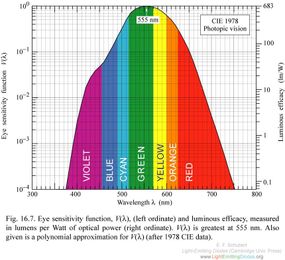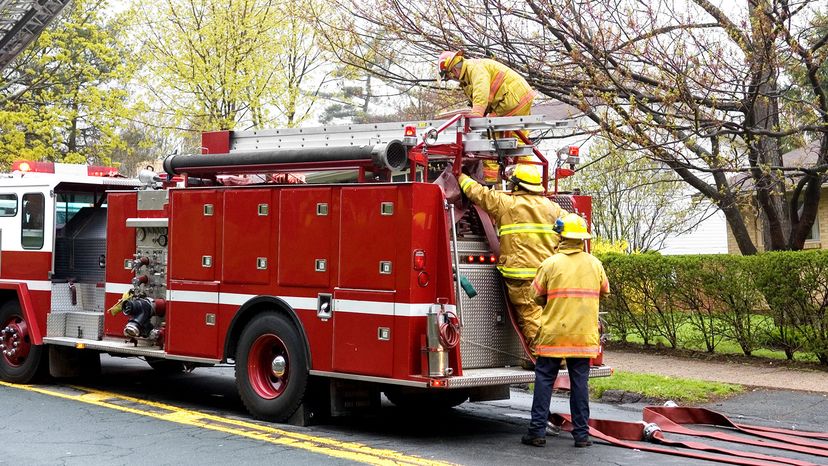
Every single school bus in the United States is painted the exact same color — a hue officially known as "National School Bus Glossy Yellow" — but it wasn't always that way.
A century ago, kids were transported to school by all kinds of random vehicles. Because there were no federal standards, it was up to states or individual school districts to hire buses, trucks and even horse-drawn wagons to ferry kids to and from school.
Advertisem*nt
Frank Cyr didn't like this system. Back in the 1930s, Cyr was a professor at Teachers College, Columbia University, and an advocate for rural education. Cyr traveled the country conducting a study of school transportation. "In many cases, standards have been set up by more or less hit-and-miss methods," reported Cyr in a New York Times article. He decided that something needed to be done to keep America's schoolkids safe.
So in 1939, Cyr organized a conference in New York City dedicated to improving and standardizing the American school bus. He invited educators, transportation officials from 48 states and bus manufacturers to design a newer, safer school bus.
At that historic meeting, conference attendees proposed 44 national standards for the modern school bus, from its dimensions to its doors to the width of its aisle. But the standard that made Cyr famous was "school bus yellow."
Advertisem*nt
Contents
- Why Was Yellow Chosen for School Buses?
- Why Yellow Stands Out
- School Buses Are Built for Safety
- If Yellow is More Visible, Why Are Fire Trucks Still Red?
Why Was Yellow Chosen for School Buses?

According to William Cyr, Frank's son, his father set out to find a school bus color that would not only be easily visible from a distance, but also distinctive. "[S]o whenever we saw it, we'd think, there's a group of kids going someplace," said William in the same New York Times article. "Before that, they sent kids to school in anything."
In his office, Cyr laid out color samples on his desk and instinctively gravitated toward what he called "orange," a spectrum of colors ranging from orange-red to yellow to yellowish-green.
Advertisem*nt
At the 1939 meeting, Cyr hung up 50 paint swatches on the walls of the conference room and selected a special committee to pick a winner. They chose the iconic yellow-orange hue that was originally known as "National School Bus Chrome."
At the close of the conference, Cyr published a 42-page booklet proposing the nation's first school bus standards. And the cover of the booklet was, of course, school bus yellow.
Advertisem*nt
Why Yellow Stands Out
Cyr wasn't a scientist or a safety expert, but he instinctively made the connection between bright colors, visibility and vehicle safety.
"Based upon the standards of 1939, yellow was a very intelligent choice," says Dr. Stephen Solomon, a retired optometrist and founder of Visibility in Motion, which does consulting for emergency services providers.
Advertisem*nt
"The colors that are most easily seen by the human eye are the yellows — the yellow-green to yellow to greenish-yellow," says Solomon. "That's at the peak of the visibility spectrum. There's no color that attracts more attention or is more conspicuous than the yellows."

The chart at left shows the sensitivity of the eye to all of the wavelengths in the visible spectrum (during the daytime).
Solomon explains that color vision is determined by photoreceptor cells in the retina called cones. There are three types of cones, each tuned to detect different wavelengths of light: red, green and blue. Yellow light stimulates both the red and green cones simultaneously, which is why the eye is most sensitive to colors in the yellow range.
What Cyr probably didn't consider is that 8 percent of men and 0.5 percent of women are red-green color deficient, meaning they have difficulty differentiating between red and green. But research cited by Solomon shows that golden yellow is the "most easily visible color for both normal and color deficient groups under all testing conditions."
Advertisem*nt
School Buses Are Built for Safety
Frank Cyr died in 1995, but he lived to see his yellow school buses become the national standard and an American icon. According to the National Highway Traffic Safety Administration (NHTSA), any new school bus sold or leased in America must meet all federal safety standards, including that bumblebee paint job.
While yellow paint certainly makes school buses more visible and recognizable, there's a lot more that goes into making them safe. The NHTSA rightly calls school buses "the most regulated vehicles on the road," because modern school buses are equipped with safety features like high-crush standards, rollover protections, flashing red lights, and stop-sign arms.
Advertisem*nt
School buses carry some precious cargo. More than 26 million American kids ride to school each day in 480,000 school buses. And thankfully, less than 1 percent of all traffic fatalities involve children on a school bus, according to the NHTSA. From 2011 to 2020, there were 113 traffic fatalities on school buses in that 10-year period, or 11 per year on average.
If they're supposed to be so safe, though, why don't all school buses have seatbelts? For starters, school buses are big and heavy, so they don't stop as suddenly in an accident. And thanks to a design concept called "compartmentalization," children are protected from injury during a crash by closely spaced seats with energy-absorbing seat backs. Buses that weigh less than 10,000 pounds (4,535 kilograms), however, are required to have seatbelts.
Advertisem*nt
If Yellow is More Visible, Why Are Fire Trucks Still Red?

Fire trucks have been painted red for more than a century, although no one is sure how the custom began. From a safety and visibility perspective, however, red isn't a great choice. Solomon says that red colors are not only far less visible during the day (see the chart above), but they virtually disappear at night.
Starting in the 1970s, some fire departments switched to bright yellow for increased visibility, and the safety record is impressive.
Advertisem*nt
In the 1990s, Solomon and a colleague conducted research comparing the accident rates of traditional red fire trucks versus the new yellow engines, which are more lime-yellow than the yellow-orange of school buses. The data was clear. When the same fire department in Dallas, Texas, used both red and lime-yellow fleets, the red trucks were involved in accidents at three times the rate of yellow vehicles.
Still, many fire departments are hesitant to make the change. In 2009, the U.S. Fire Administration (a division of FEMA) released a report confirming that bright yellow and fluorescent colors were more visible than red, but the agency didn't recommend a wholesale switch to yellow trucks.
"[I]t is a common belief that people are more likely to identify red with a fire apparatus than other colors, regardless of the conditions," said the USFA report, recognizing the importance of the traditional color in quickly identifying an emergency vehicle. Additionally, fire trucks have loud sirens to warn drivers to get out of the way, unlike school buses.
Now That's Not Great
The original formulation of yellow school bus paint was called National School Bus Chrome because it was a lead-based paint made with chromium. If inhaled, chromium paint can damage DNA in the lungs, and lead-based paint is also toxic. Fortunately, the formulation for school bus yellow was changed decades ago.
Advertisem*nt